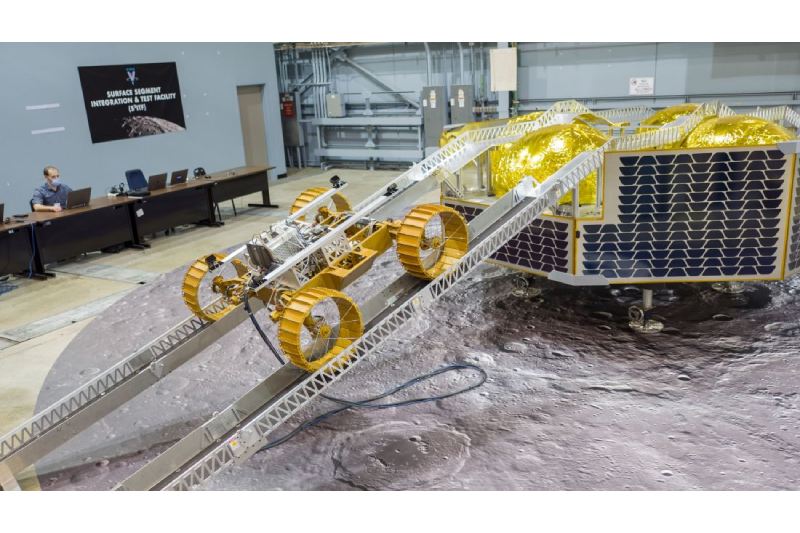NASA Robotic Moon Rover Team Lifts Their Massive Mast

NASA’s Volatiles Investigating Polar Exploration Rover, or VIPER, is now more powerful and towering than before. And its mast is to blame for it.
The instruments attached to VIPER’s mast resemble the “neck” and “head” of the rover. When navigating around potentially dangerous crater slopes, boulders, and locations where communications outages could occur, the rover’s team of real-time scientists and drivers will be assisted in sending and receiving data by the mast instruments. These sensors will be used by the team to survey the lunar South Pole in addition to four research packages. Over the course of its roughly 100-day mission, VIPER aims to learn more about the Moon’s severe environment—where NASA intends to deploy astronauts as part of the Artemis campaign—and the source of water and other resources.
A pair of stereo navigation cameras, a pair of bright LED headlights, and a low- and high-gain antenna for sending and receiving data from the Deep Space Network (DSN) antennas on Earth are all mounted atop VIPER’s mast, which extends about eight feet (2.5 meters) above the wheel rims.
The stereo navigation cameras, which serve as the rover’s “eyes,” are attached to a gimbal-equipped section of the mast, which enables the team to tilt and pan the cameras up to 75 degrees and 400 degrees in either direction.From as far away as 50 feet (15 meters), the VIPER team will use the navigation cameras to capture wide panoramas of the rover’s surroundings and images to identify and investigate surface features like rocks and craters as small as four inches (10 cm) in diameter, or roughly the length of a pencil. Additionally, because the navigation cameras are positioned high, the VIPER crew may observe regions of interest for science near the Moon’s South Pole from a viewpoint that is almost human-like.
As a result of the Moon’s extremes in light and dark, VIPER will be the first planetary rover equipped with headlights. Similar to a car’s high beams, the headlights will cast a narrow, long-distance beam that would aid the team in revealing hazards or intriguing terrain features that would otherwise remain concealed in the darkness. The lights, which are positioned close to the rover’s two navigation cameras, are made up of arrays of blue LEDs that were chosen because the rover navigation team wanted to maximize visibility despite the difficult lighting conditions on the Moon.
VIPER features a gimballing precision-pointed high-gain antenna that will carry information via an extremely concentrated, narrow beam in order to transfer massive volumes of data across the 240,000 miles (384,000 km) that separate Earth and the Moon.Although it uses radio waves and transmits data at a far slower rate, its low-gain antenna may nevertheless convey data. In order for scientists to accomplish their mission objectives, the rover needs to be able to receive commands while moving on the Moon and send any data it collects back to Earth. This requires the antennas to be able to keep their proper orientation even when traveling. After that, all of that data is moved from the DSN to the Multi-Mission Operations and Control Center, which houses rover operations at NASA’s Ames Research Center in Silicon Valley, California.
Engineers tested the mast extensively before installing it on the rover. A thermal vacuum chamber was utilized to confirm that the white covering around the pole insulated as planned. The crew successfully checked out the mast’s components after integrating it in the clean room of NASA’s Johnson Space Center in Houston. They also sent data over the rover’s antennas for the first time.
Managed by NASA’s Science Mission Directorate at NASA Headquarters in Washington, DC, the Planetary Science Division oversees VIPER, which is a component of the Lunar Discovery and Exploration Program. Part of NASA’s Commercial Lunar Payload Services program, VIPER will launch to the Moon on a SpaceX Falcon Heavy rocket carrying Astrobotic’s Griffin lunar lander. It will arrive at Mons Mouton, which is close to the South Pole of the Moon.